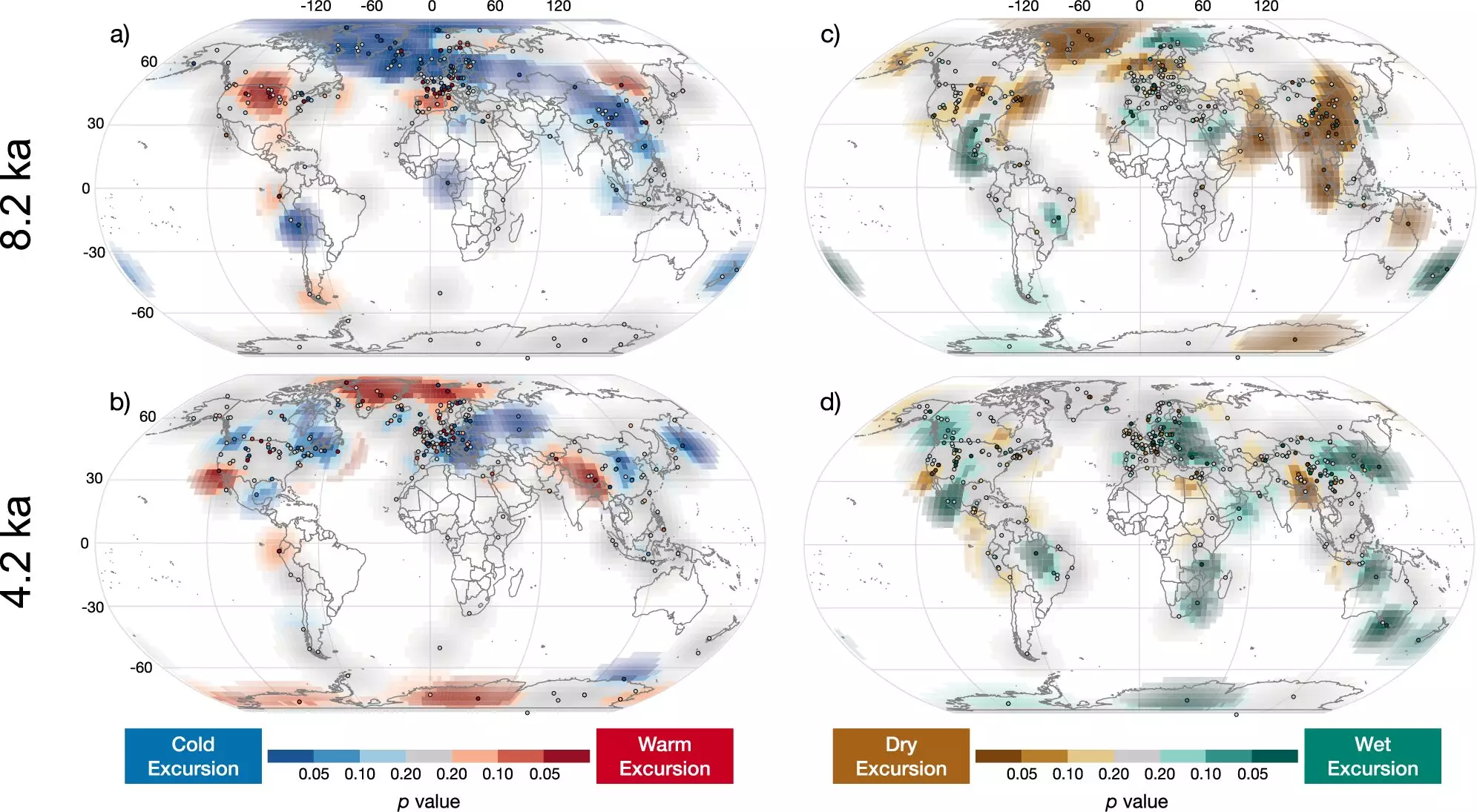The 4.2 kiloyear event, or megadrought, traditionally characterized as a global climatic catastrophe, has long been thought to have led to the decline of ancient civilizations and dramatic ecological changes. This widespread perception suggests that climate variations during this period were universally detrimental, driving early empires to collapse. However, new research emerging from Northern Arizona University challenges this narrative, suggesting that while the megadrought occurred, its repercussions may not have been as uniformly catastrophic across the globe as previously posited. Instead, this finding opens up questions about the nature of historical climate fluctuations during the Holocene, a period spanning roughly 11,700 years.
This intriguing re-evaluation stemmed from a unique collaborative approach involving graduate students, faculty, and alumni at NAU. Led by Nicholas McKay, an associate professor in the School of Earth and Sustainability, the research utilized a vast archive of climate data—over 12,000 years’ worth—enabling a more nuanced understanding of past climate events. The method adopted by the team involves rigorous data analysis and a distinctive framework to identify significant climatic events from paleoclimate data. It emphasizes the importance of student involvement in scientific research, showcasing how academic environments can foster discoveries that break away from traditional narratives.
This participatory aspect of the research not only empowered students but also enriched the findings with diverse perspectives. As highlighted by co-author Leah Marshall, a doctoral student, engagement in such discussions facilitated a deeper understanding of data synthesis—a crucial skill for budding scientists. The team’s strategy illustrates how incorporating various voices and experiences can lead to richer, more comprehensive scientific insights.
As the research team sifted through vast climate data, they uncovered a critical revelation: the impacts attributed to the 4.2 ka event varied widely. While some regions did experience noticeable climate shifts, others demonstrated minimal or different outcomes. This led to an understanding that rather than a monolithic global event, the realities of climate change were marked by localized disturbances. The team confirmed that while abrupt changes did occur, they were often part of a broader tapestry of climate variability rather than singular transformative events.
Moreover, the study identified other significant climatic shifts, including the notable 8.2 kiloyear event, which revealed pronounced changes in the North Atlantic region, as well as fluctuations during the Common Era, linked to the Dark Ages Cold Period and the Medieval Climate Anomaly. These findings suggest a complex interplay of various climatic events throughout the Holocene, reinforcing the notion that global coherence in climate phenomena is rare.
The implications of this research extend beyond a mere reclassification of historical events. It suggests a need to critically assess how we interpret local climate changes and their significance on a global scale. The authors advocate caution against overstating the consequences of localized climate excursions, as doing so might lead to misconceptions regarding the overall climatic trajectory of the Earth. The study serves as a vital reminder that while historical data can illuminate past patterns, they should be contextualized appropriately, avoiding blanket conclusions that may misrepresent climatic realities.
Beyond illuminating past climatic events, the insights gained from studying the 4.2 ka megadrought can significantly inform future climate predictions. Recognizing that natural climate fluctuations can occur independently across various regions equips scientists with a more nuanced framework for understanding contemporary climate changes. As McKay noted, the interplay between natural climate variations and human-induced changes is critical for developing accurate climate models for the future.
The publication of their analytical methods promises to facilitate future research endeavors, encouraging scientists to explore vast datasets more effectively. The collaborative nature of this study, combining education with research, showcases how innovative academic programs can contribute to groundbreaking discoveries that reshape our understanding of climate history.
The reevaluation of the 4.2 ka megadrought offers a compelling case for the complexities of historical climate variability. By probing deeper into climatic data and fostering collaborative research, the authors have managed to shift the lens through which we view significant climatic events. Moving forward, such nuanced insights will be invaluable for comprehending historical climate patterns and addressing future climate challenges in an ever-evolving world. The findings underscore the importance of continually refining our understanding of the past to better anticipate the future.

